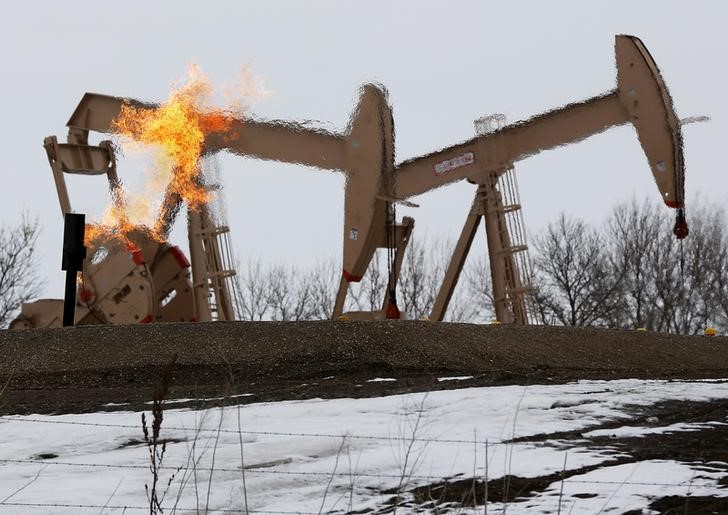Gold prices set for weekly gains on dovish Fed outlook; silver near record high
By Barani Krishnan
Investing.com - Crude prices jumped 5% on Wednesday, their most in six weeks, as the European Union said it will completely stop purchasing oil from Russia by the end of the year — renewing the focus on supply in a market where there just does not seem enough barrels to make up for projected demand.
Brent crude, the London-traded global benchmark for oil, settled up $5.17, or 4.9%, at $110.14 a barrel.
New York-traded West Texas Intermediate, or WTI, the benchmark for U.S. crude, settled up $5.40, or 5.3%, at $107.81.
Oil markets started the week on a fragile foot, almost breaking the key $100 per barrel support, on worries about China’s latest Covid situation and how its economic fallout from there could impact demand for crude from the world’s largest importer of the commodity. Also weighing on oil then were concerns that the Federal Reserve was about to embark on a series of heavy rate hikes that could send the US economy into recession.
But European Commission President Ursula von der Leyen’s proposal for a phased oil embargo on Russia over its war in Ukraine, and sanctioning of Moscow’s top bank, put crude prices back in positive territory by Wednesday.
The Fed’s 50-basis, or quarter-percentage, point hike announced on Wednesday — its highest in two decades — also did little to ruffle the oil market, with the central bank’s chairman Jerome Powell assuring that the economy was in good standing and nowhere near to a recession.
Traders said the gains in crude oil were likely to continue as the market turns its full attention to Thursday’s monthly meeting of global oil alliance OPEC+, which is determined to keep a barrel at or above $100.
OPEC+ has managed to push crude prices up at each of its meetings over the past year by offering a meager hike of 400,000 barrels per day in monthly production to a market where demand is well above, after the disruptions caused by Covid 2020. On top of that, the alliance, made up of 23 oil-exporting nations that include Saudi Arabia and Russia, has fallen short on its production pledges over the past year, adding to the rally in crude.
Weekly inventory data from the Energy Information Administration showing a surprise crude build for last week hit WTI briefly, though the bearish impact soon evaporated on numbers showing the U.S. emergency crude reserve having fallen to 21 years low as the Biden administration continued to release oil from there to a supply-starved market.
Notwithstanding crude’s renewed fervor to the upside, analysts said prices had to break beyond the $120 resistance for Brent and $115 for WTI to enter new bullish territory.
“In the bigger picture Brent crude is still in a broader $100 to $120 range and WTI in a $95 to $115,” said Jeffrey Halley, head of Asia Pacific research at online trading platform OANDA. “Only a weekly close above or below those levels signals a new directional move.”
